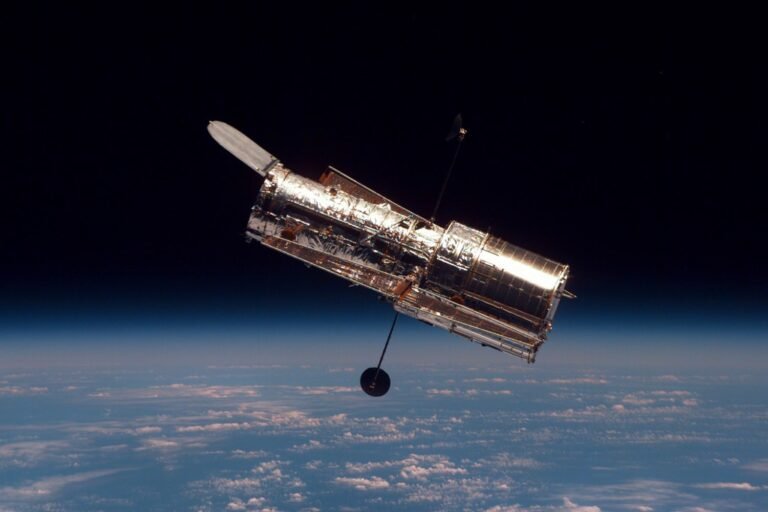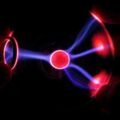Tech Talk Episode 4: Space Telescopes
In this episode of The Debrief’s Tech Talk, our intrepid team of gadgetry gadflies Stefan Gearhart and Josh Rutledge host a “facts-optional” episode about the 54 years of science since the launch of the first space telescope in 1968 aptly titled “60+ years of space telescopes.” (Note: This is among the least egregious of errors in this episode, which is what makes it so much fun)
First, due to the space theme of the episode, Mr. Stefan Gearhart drops his usual moniker of “mister” and opts for the more spacely “Captain.” Matching and exceeding this effort, Josh Rutledge declares that his space rank and title will be “Professor Ensign First Class Josh Rutledge,” only with a bunch of letters at the end like “esq” or “a.c.e.”
Next, Professor Ensign First Class Rutledge, e.i.e.i.o.-8675309 baits the Captain into saying there are only two space telescopes in existence, Hubble and Webb. In fact, Rutledge counters after springing his cleverly set trap, there have actually been over one hundred space telescopes in the last five-plus decades.
(Note: According to unnamed sources, this is also the same number of fried Twinkies the “Professor” ate at last year’s annual Winter Solstice Shotgun and Strawberries Festival in eastern Kentucky.)
“You set me up, dude!” Gearhart exclaims. “I am done with this show! I am the captain of this ship!”
At this point, Rutledge uses the Jedi mind trick to calm Gearhart, but we are not supposed to tell Gearhart, so just act like the next seven minutes of the video didn’t happen.
“How come we only know about two?” Stefan asks as he comes back from a Jedi mind trick-induced haze.
“Well, I don’t know,” Josh replies, instantly letting you know this is going to be a very high-brow, detail-oriented scientific discussion between brainy Ph.D. types. Or in this case, a Captain and a Professor Ensign First Class, M.D. O.D. L.M.A.O.
For example, Rutledge leads off this informative walk down space telescope lane by noting that the earliest space telescopes were launched in 1965 by the then Soviet Union and that NASA didn’t successfully launch their first telescope until 1972.
(According to Wikipedia, “the first operational telescopes were the American Orbiting Astronomical Observatory, OAO-2 launched in 1968, and the Soviet Orion 1 ultraviolet telescope aboard space station Salyut 1 in 1971.” Um…….what?)
Next, after hearing his platonic podcasting partner in patter explain his fear of health consequences from being bombarded by radio waves, blue tooth, wi-fi, and all of the other electromagnetic crap we get hammered with each day, Rutledge does his best Debbie Downer to explain to his soon-frowning cyber-friend how even with the Earth’s magnetosphere we are constantly being bombarded by high energy particles from space.
To emphasize this surprisingly accurate point, Rutledge recounts a story told by one astronaut who said, “You don’t realize how much you’re being bombarded with stuff on the planet until you’re in space.” And, that astronaut said, “When you close your eyes at night to sleep, you see sparks of white light. That is actually space particles hitting your retina as they pass through your body.”
(This would be a good time to point out that since the dawn of the space program, no astronaut experiencing this type of high energy particle bombardment has gone on to develop a condition where they turn into a giant green man when angry. Everyone knows that is caused by Gamma rays, which are a whole other thing.)
“Redneck fireworks,” Stefan calls them, seemingly making a joke only he and three of his high school buddies know. (Side note: If you do see sparks of light behind your eyelids when trying to sleep, it might be time to talk to your doctor about switching up your meds)
Further on in The Debrief’s painfully narrow narrowcast, Gearhart notes how much he learned from Canadian Astronaut Christ Hadfield: “When he was on the space station, he was doing those like daily live streams, and he was playing music, and he was just teaching you about all of this stuff you would never think of.” Gearhart is right. Those were cool. And The Debrief’s own Chrissy Newton interviewed Hadfield once too. Which is also quite cool.
In the next segment, our quantum-ly conjoined comic cosmologists break down the different types of technologies employed by the various telescopes launched into space. This involves some actual data phrased by Josh in a simple way so Stefan could understand it, which makes him a good host and a nice friend. And remember, if you meet Stefan in person, it is okay to talk slow and use small words so he can follow you. It is not condescending. I also hear it is how his wife captured him from the wilds like that guy caught Jodie Foster’s character who lived in the wilds.
In one example of this well-intentioned effort, Rutledge explained to Lennie…er…Gearhart how light works, and also how he taught his children that the sun isn’t really yellow but is actually white like all other stars and only appears yellow because of the Earth’s atmosphere. A guffawing Gearhart replied that he thought all stars were white because of Hollywood’s legacy of racism. (No, he didn’t say that)
Next, Rutledge explains how some space telescopes look for Ultraviolet (UV) light instead of visible light.
“This is why we can’t have vampires in space,” Gearhart replies, “too much UV.” Sadly, this is the closest to an actual scientific fact that Gearhart got in this podcast.
When the two Tech Talk titans of titanic timewasting talk shows resume talking about the technical difficulty in attending to telescopes in space, Rutledge recounts the story of an astronaut who had to replace a computer card in the Hubble, a process that involved removing and then replacing 76 individual screws while wearing bulky spacesuit gloves.
“They asked him, ‘How long did it take you to do it?’” Rutledge recounts. “And he said, ‘I didn’t think about it. I did the first one. When that one was done, I did the next one, until they were all done.’”
(According to unconfirmed reports, this is exactly how Rutledge often describes his successful consumption of all of those fried Twinkies)
While Rutledge appears to be reminiscing about fried pastry, Gearhart tries to envision what the attitude of a future white-collar father-in-law might be toward a comically blue-collar son-in-law who “only” repairs space telescopes. Rutledge echoes this ironic introspection into the dehumanizing advancement of technology by saying that he envisions a movie with Jim Carrey in the title role. “Hubble Guy!”
On a serious note, Rutledge notes how this severely limited ability to repair and maintain space telescopes also limits the service life of most to less than ten years, rather than the 33 plus enjoyed by Hubble. Sad but true.
Next, the guys provide a nice survey of the various visible-light telescopes sent into space. Surprisingly, this list also includes Hubble, which was featured in the UV telescope segment but is actually equipped for both types of observations.
“It’s a triple threat!” Stefan exclaims with an outsized dose of incorrect enthusiasm.
“Well, in this case, it’s a double,” Josh clarifies, reminding viewers and listeners why he is here instead of another addle-brained improv comedian.
In the next segment, the guys talk about Infrared (IR) telescopes, including the James Webb telescope. This segment is neat.
Then suddenly, in a rare moment of passion for politics, Comrade Gearhart goes on a rant about how the U.S. space program would be farther along if the USSR was still around, how he liked Trump’s space policies, and how China is doing a lot of cool stuff in space as well.
(Note: No news yet on whether this particular rant has resulted in Mr. Gearhart being put on a domestic terrorist watch list. Also, I may have taken some comic license in the description. But he did kinda say most of it. Commie.)
The next segment is, by far, the most entertaining of the whole show. For instance, Rutledge laments that the James Webb Telescope isn’t as large as the Hubble. (In fact, the primary mirror on Webb is 6.5 meters in diameter, vs. 2.4 on Hubble. https://thedebrief.org/the-james-web-telescope-will-change-the-way-we-see-the-cosmos/) Josh then explains the concepts of red-shift and blue-shift, and only gets like 30% of it wrong, while repeatedly telling listeners that he is sure he is getting it wrong, which is oddly charming.
But seriously…when it comes to our Tech Twins’ sheer enthusiasm for Webb outstripping their actual information, nothing could quite prepare the legions of Debrief Tech Talk Podcast listeners for the scientific nuclear bomb that the soon-to-be-court-martialed Professor Ensign First Class Rutledge was about to drop on the entire space watching community.
“There’s an opportunity here for James Webb Space Telescope to look further back in time than the Big Bang!”
BAM!
(Note to readers, viewers, and listeners: Due to the effects of red-shift and Webb’s extreme sensitivity to IR emissions, the observatory will be able to look back to within a few hundred million years after the Big Bang, maybe even earlier. However, time as we know it (and measure it) most likely did not exist before the Big Bang. So, unfortunately, the James Webb Telescope will not be able to see “further back in time than the Big Bang,” since that would be before there even was time. I’d try to explain in more detail how wrong this idea is, but we both don’t have the time.)
In the next segment, Rutledge redeems himself with an essentially accurate analysis of one theory of a cyclical Big Bang, pointing out that data from Webb may help to confirm or deny that theory. He then goes on to give his own (admittedly tongue-in-cheek) theory, which involves a massive alien, a magnifying glass, and a match head. I would try to explain it here, but he lost me at the whole “further back in time than the Big Bang” thing.
As the pod nears a close, the Tech Talk talking heads talk the talk about other telescopes, including those looking for dark matter and gravitational waves. They also note that there is a “whole slew” of space telescopes at different stages of planning and development all waiting for their turn to peer into the cosmos. This segment ultimately leads to Rutledge talking about NASA’s planned “NOSTRADAMUS” space telescope, a mission that Rutledge says “will be able to look back to the future!” (Okay, he didn’t actually say that. But I was kinda waiting for it.)
This week, the guys forgo the rating system, with both saying that all space telescopes rate a Warp 5. We agree.
“I say kudos to everyone doing this,” said Gearhart while petting a hairless cat and smoking an intricately bedazzled hooka. “All the scientists behind that. You have our support.” (Note: Don’t smoke. Or shave cats)
IT’S AN APP!
In this week’s version of “It’s an App,” the guys discuss Hypnosis Downloads. As the name implies, Hypnosis Downloads provides users a list of downloadable hypnosis-related resources to treat an array of issues. These include things like sugar addiction, anxiety, and even grief and loss just to name a few.
It is unclear if the app includes training on hypnotizing others, but when I finished watching the show I couldn’t remember the last 13 minutes of what Josh said and I suddenly had an insatiable desire to wire him all of my money. Wait, how do I already know his routing number? Damn you, Professor Ensign First Class Rutledge, A.E.I.O.U., THX-1138!!!
Follow and connect with author Christopher Plain on Twitter: @plain_fiction

